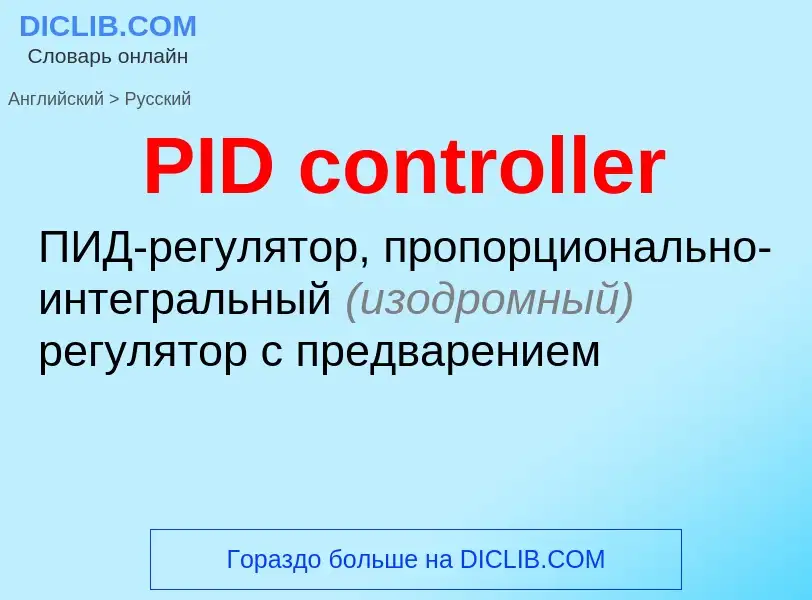Translation and analysis of words by ChatGPT artificial intelligence
On this page you can get a detailed analysis of a word or phrase, produced by the best artificial intelligence technology to date:
- how the word is used
- frequency of use
- it is used more often in oral or written speech
- word translation options
- usage examples (several phrases with translation)
- etymology
PID controller - translation to russian
строительное дело
ПИД-регулятор, пропорционально-интегральный (изодромный) регулятор с предварением
строительное дело
ПИД-регулятор, пропорционально-интегральный (изодромный) регулятор с предварением
Definition
Wikipedia
A proportional–integral–derivative controller (PID controller or three-term controller) is a control loop mechanism employing feedback that is widely used in industrial control systems and a variety of other applications requiring continuously modulated control. A PID controller continuously calculates an error value as the difference between a desired setpoint (SP) and a measured process variable (PV) and applies a correction based on proportional, integral, and derivative terms (denoted P, I, and D respectively), hence the name.
In practical terms, PID automatically applies an accurate and responsive correction to a control function. An everyday example is the cruise control on a car, where ascending a hill would lower speed if constant engine power were applied. The controller's PID algorithm restores the measured speed to the desired speed with minimal delay and overshoot by increasing the power output of the engine in a controlled manner.
The first theoretical analysis and practical application of PID was in the field of automatic steering systems for ships, developed from the early 1920s onwards. It was then used for automatic process control in the manufacturing industry, where it was widely implemented in pneumatic and then electronic controllers. Today the PID concept is used universally in applications requiring accurate and optimized automatic control.










![Early PID theory was developed by observing the actions of [[helmsmen]] in keeping a vessel on course in the face of varying influences such as wind and sea state. Early PID theory was developed by observing the actions of [[helmsmen]] in keeping a vessel on course in the face of varying influences such as wind and sea state.](https://commons.wikimedia.org/wiki/Special:FilePath/Scross helmsman.jpg?width=200)

